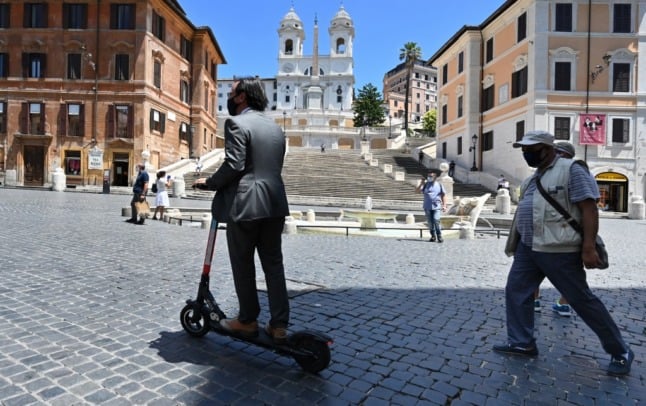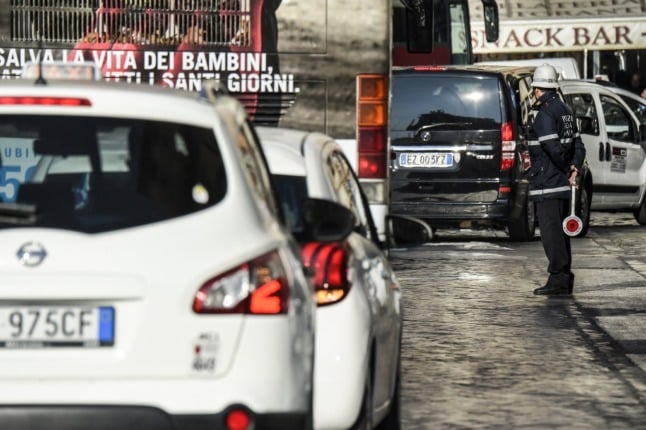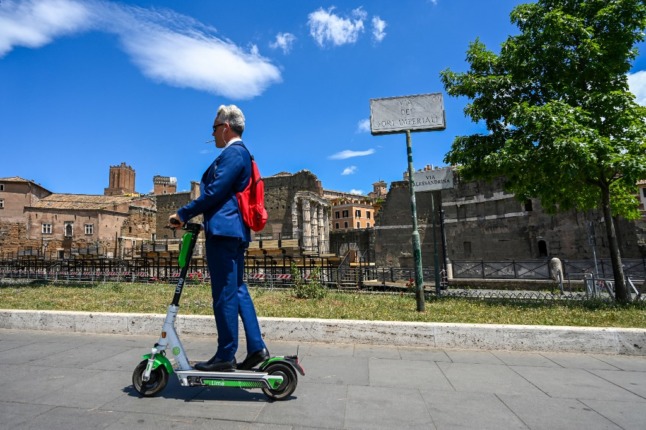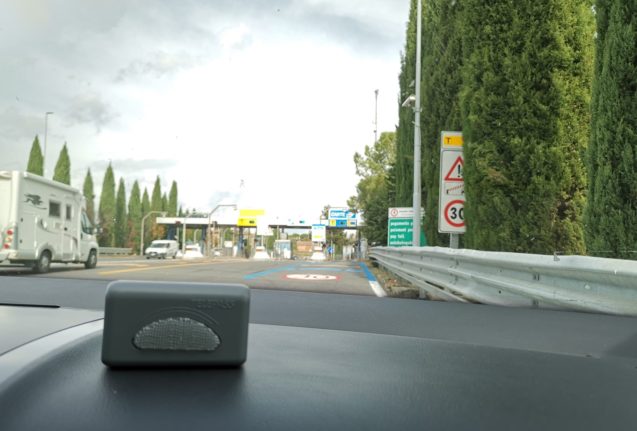Cars, motorbikes, pedestrians and e-scooters are all affected in the update to the Highway Code, confirmed by the government’s latest Infrastructure Decree and effective immediately from November 10th.
Among the changes are tighter restrictions for e-scooters, including a reduction in the maximum speed from 25 to 20 kilometres per hour and 6 kilometres per hour in pedestrian areas.
E-scooters are now forbidden on pavements unless they are pushed by hand, and are not allowed to be parked on pavements except in areas permitted by the authorities. Users can still park them in parking bays for bicycles and mopeds.
Under the new changes, scooter rental operators are obliged to ask for a photo at the end of each rental, clearly showing the position of the parking space.
READ ALSO: What you need to know about Italy’s electric scooter craze
This mode of transport will also have to be adapted better to the road, as all models will need indicators and a rear stop light from July next year. Specifically, this must be a fixed white or yellow light at the front and a red light at the back, both of which are lit and in good working order.
In hours of darkness, which is described as from half an hour after sunset, e-scooter drivers must wear a high-visibility reflective vest or harness.
Penalties and confiscation of vehicles will also apply if drivers have modified their e-scooter to go faster.
Only people over fourteen years of age can ride an e-scooter and those under eighteen must wear a protective helmet.

Electric scooters have become popular in cities across Italy in the last couple of years, with multiple brands making them available for quick and easy use via sharing apps.
Italian media reported a “boom” in the use of electric scooters, or monopattini, in Italian cities amid the pandemic as people avoided public transport.
The new restrictions followed reports of eight riders who died in traffic accidents between the start of this year and September, according to the news daily Repubblica.
E-scooter users aren’t the only ones facing stricter rules.
On the subject of helmets, fines will also be issued to any motorbike driver carrying a passenger not wearing a helmet. Until now, it was only required for passengers under eighteen.
Drivers distracted by using devices will also face tougher penalties under the updated rules. This includes motorists caught using a tablet while driving under the new definition of devices.
In fact, the list of electronic devices that cannot be used while driving has now been extended to include “smartphones, portable computers, notebooks, tablets and similar devices that even temporarily take the hands off the steering wheel”.
READ ALSO: ‘Anyone can do it’: Why passing your Italian driving test isn’t as difficult as it sounds

Despite, some parliamentarians previously asking that fines be significantly raised for those caught on their smartphones or tablets while driving, the sanctions remain unchanged.
There will also be no suspension of the licence for the first offence. This is much more lenient than what was discussed – of anywhere from seven days to two months for first time offenders, as news agency Ansa reported.
Other changes to the Highway Code include an obligation to give way to pedestrians. Drivers must stop and let through not only those who have already started to cross but also those who are about to.
The new rules of the road have also introduced tougher measures for combatting littering.
Fines will be doubled for those who throw objects or waste onto the road, ranging from a minimum of €216 to €866 for those caught chucking waste from a stationary or moving car. Previously this was between €108 to €433.
READ ALSO: ‘Expect the unexpected’: What you need to know about driving in Italy
Meanwhile, those who toss a cigarette butt or waste paper out of the window while driving will have to pay between €56 and €204 compared to the previous fine of €26 to €102.
Provisions have also been made for disabled parking spaces. From January 2022, people with disabilities will be able to park free of charge in the blue lines when there are no reserved spaces available.
The update also introduced so-called “pink” parking spaces for pregnant women and parents with children up to two years of age.
Penalties apply to those who take these parking spaces without being eligible, ranging from €80 to €328 for two-wheeled vehicles and from €165 to €660 for other types of transport.
There’s also good news for learner drivers, as the validity of the learner’s permit or foglio rosa has been extended from the previous six months to one year. This gives learners the chance to repeat the driving test for a licence, the patente B, three times.
The proposed controversial driver smoking ban was rejected.
Therefore, lighting up in the car is still only illegal in Italy if you’re with anyone who is under 18 or pregnant. Fines of between €50 and €500 remain in place for those caught smoking in a vehicle with pregnant women or children under the age of twelve.



 Please whitelist us to continue reading.
Please whitelist us to continue reading.
Member comments